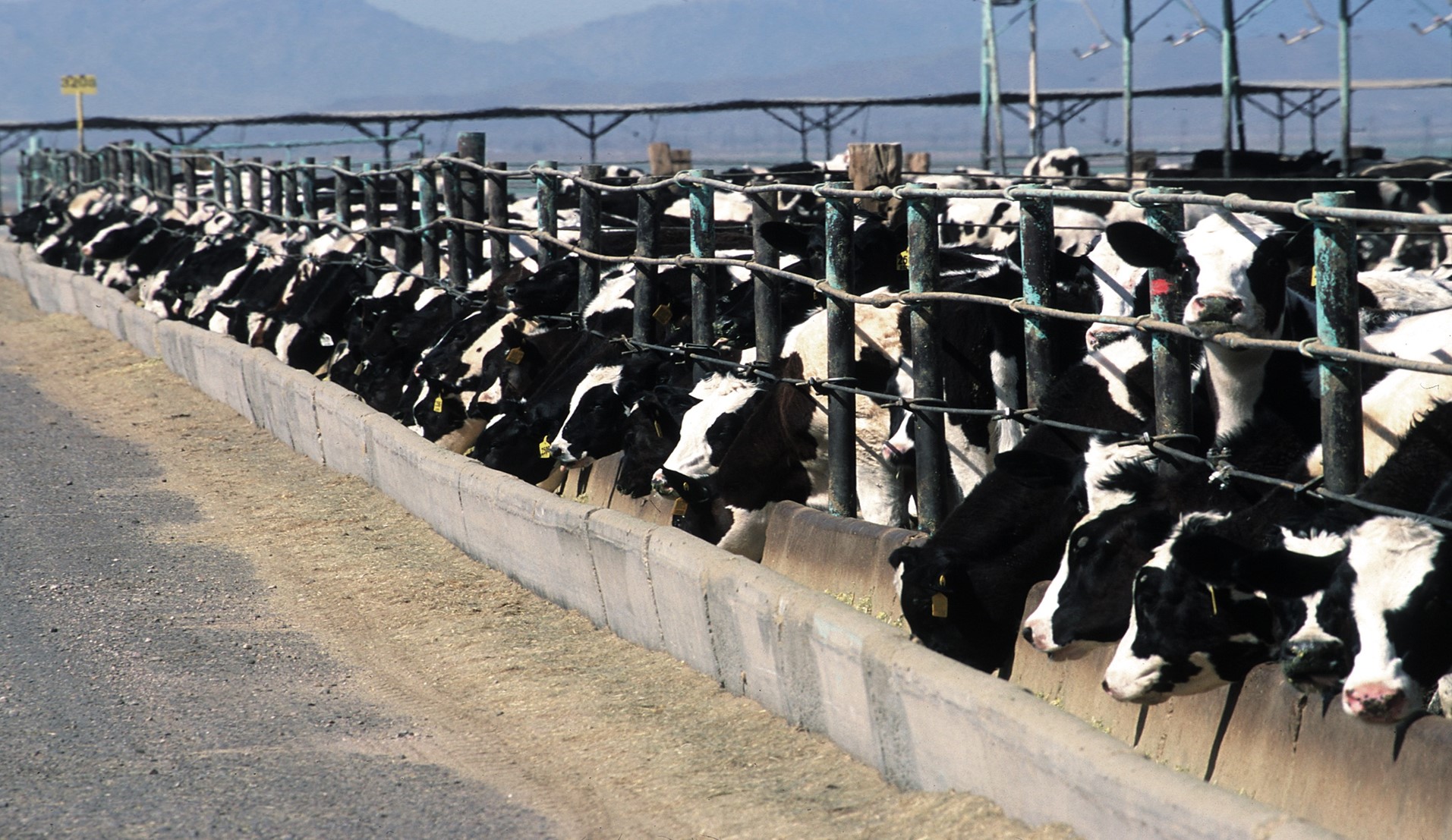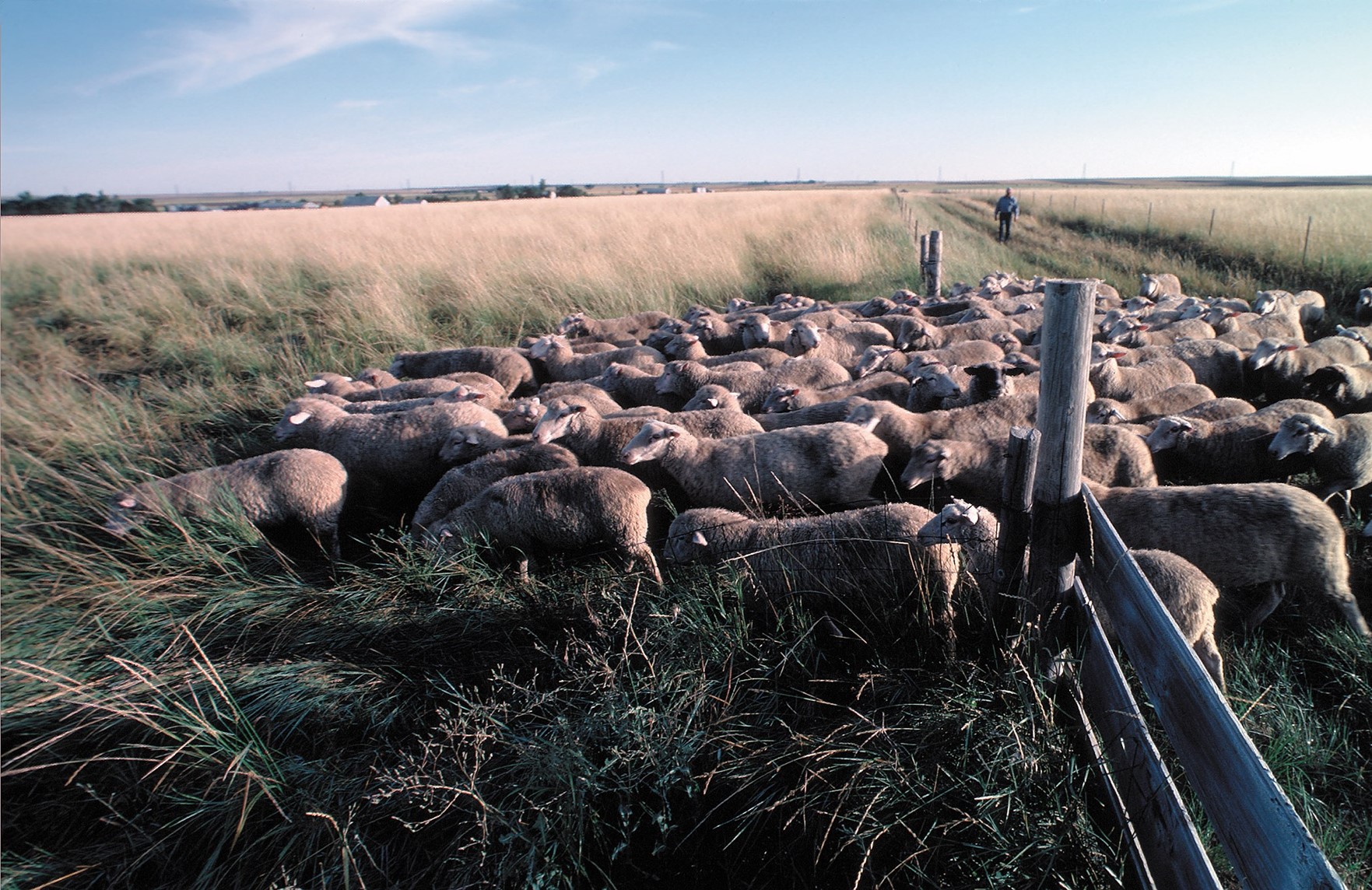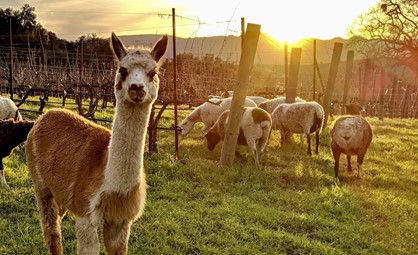Livestock grazing can be an appropriate activity on many private lands that are suitable for sustained-yield forage production. If properly managed, grazing can play a significant role in building soil organic matter, increasing plant and wildlife biodiversity, increasing water holding capacity, and reducing infestations of invasive plants.
Animal grazing systems that mimic natural ecosystems, help build healthy soils, sequester large amounts of carbon, and foster biodiversity are preferred. Protection of air quality, water quality, soil health, and wildlife habitat must be the highest priority.
The Problem:
The confinement of domesticated animals in Concentrated Animal Feeding Operations (CAFOs) to provide the least expensive meat and animal products creates significant environmental degradation because production can require large inputs of many types. These inputs include the energy to make synthetic fertilizer to grow feed, chemical spraying on the feed, energy to harvest and transport feed to the feedlot, and energy to transport and dispose of animal waste. In CAFOs, pollution related to production can be grossly disproportionate to the amount of food produced.

Animal Feeding Operation, Arizona. USDA, NRCS, Image by Jeff Vanuga
CAFOs crowd large numbers of animals in small, confined spaces and substitute intensive management, an artificial diet, and heavy application of prophylactic antibiotics and artificial hormones instead of allowing the animals to have their normal diet and the freedom to exhibit normal animal behaviors. Negative impacts also include:
-
Release of toxic substances into the environment and food chain,
-
Air and water pollution from animal wastes,
-
Solid waste management problems,
-
Inhumane treatment of animals,
-
Health hazards from noxious fumes, and
-
Diversion of cropland from producing food for humans to producing food for animals.
CAFOs also accelerate climate change by their disproportionate production of greenhouse gases.
The Sierra Club opposes new CAFO operations, and supports phasing out existing operations as quickly as possible. The nontherapeutic use of antibiotics in livestock should also be eliminated.
The Solution:
Grazing and pasturing methods that recycle animal wastes back into the soil have the potential to regenerate and transform vast amounts of coarse, sustainably grown forage into food for animals and for humans. These traditional systems are more productive and less destructive than CAFOs and the large grain production and feedlot operations that CAFOs require. Animals raised on perennial forage pastures cause far less soil erosion and nutrient loss compared with animals in confinement being fed crops from annual row cropping. If located and managed properly, grass-based animal production systems can improve soil quality, sequester carbon, and serve as buffer systems to protect and improve water quality.
There are two primary sustainable and regenerative livestock management methods being implemented today; both having traditional roots.
-
Rotational grazing, also called Adaptive Multi-Paddock (AMP) grazing mimics the behavior of animals in the wild that stayed close together to fend off predators and that were constantly on the move in search of food. In this grazing practice, the land is divided into segments called paddocks, with the grazing animals (cattle, sheep, goats, chickens, turkeys) moved from paddock to paddock every few days. The forage grasses, both introduced and native grasses and forbs, are allowed to rejuvenate while the paddock is resting between grazing periods. This results in less soil erosion and builds a higher quality and greater output of grasses. The resulting grasslands are much healthier.

Sheep AMP grazing in South Dakota. USDA, NRCS, Image by Tim McCabe
-
Integrated (or mixed) crop-livestock systems are traditional farming practices where both crops and livestock are raised on the same farm, and the livestock are allowed to graze on cover crops or forbs either between the rows of cash crops or trees, or during off season. These systems are beneficial in returning carbon to the soil in the form of manure, thus building and maintaining healthier soils that create healthier crops.

Animals tend to cover crops between the vine rows, two important tenets of regenerative farming at Tablas Creek Vineyard in California. (Tablas Creek Vineyard)
For more on the benefits of integrating crops and livestock, see https://rodaleinstitute.org/science/crop-livestock-integration/